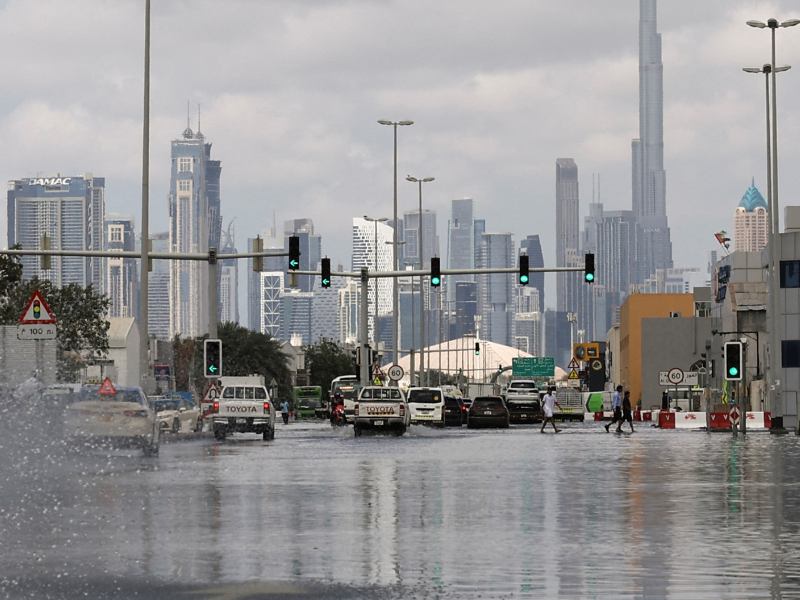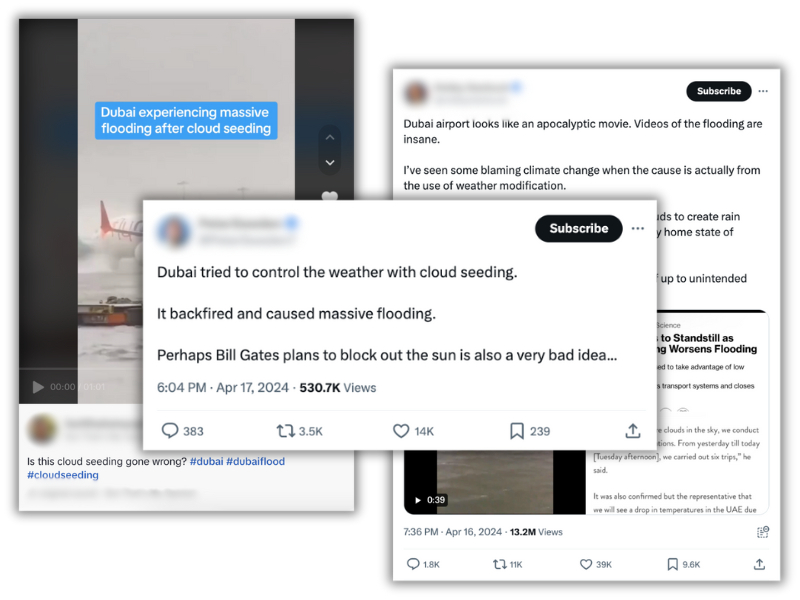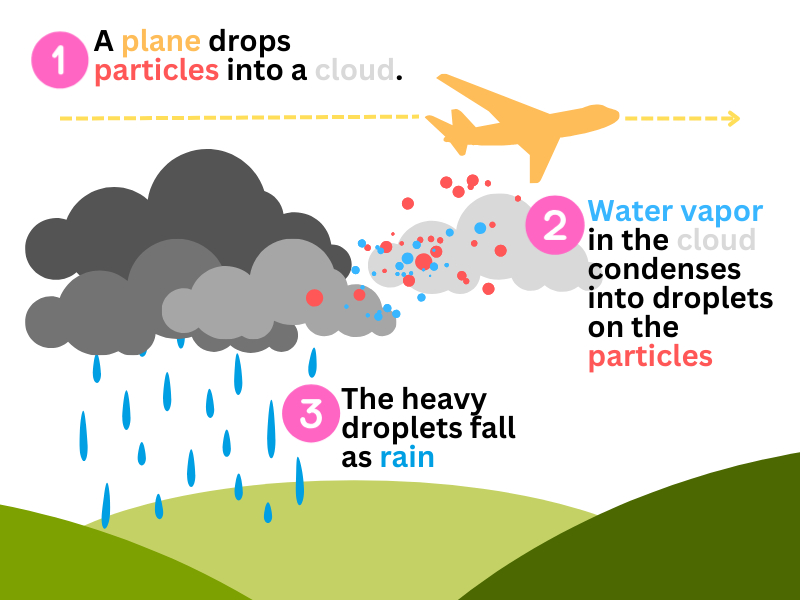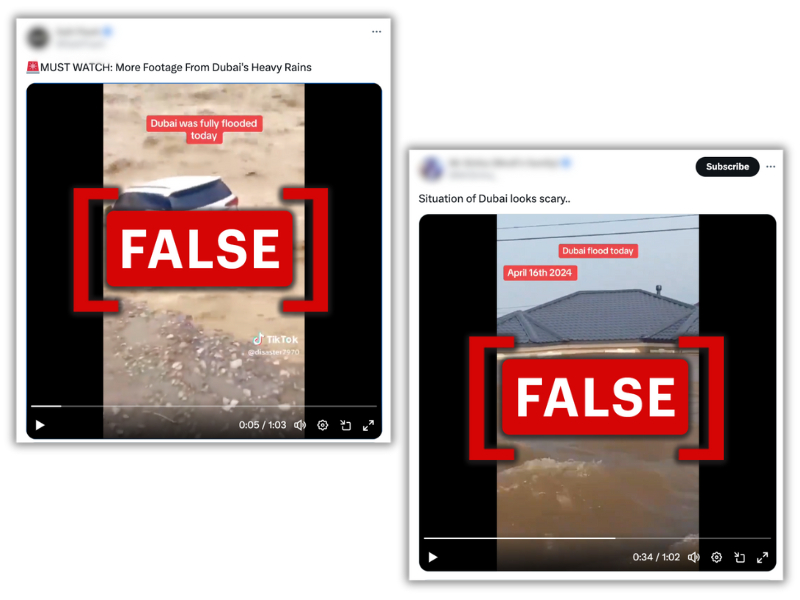By: nikolaj kristensen
April 18 2024
Did cloud seeding cause floods in Dubai?

(REUTERS/Amr Alfiky)
On April 16, Dubai experienced massive floods as heavy rains hit the UAE. According to state-run news agency WAM, the rainfall surpassed "anything documented since the start of data collection in 1949."
Soon claims spread online that the floods were caused by cloud seeding – a practice of weather modification where rain is triggered by having planes drop salts in clouds – gone wrong. The UAE has used cloud seeding to improve rainfall in the dry region.
 People speculated online that cloud seeding had caused the floods. (Source: TikTok/X/Screenshots)
People speculated online that cloud seeding had caused the floods. (Source: TikTok/X/Screenshots)
However, Friederike Otto, a senior lecturer in climate science at Imperial College London, told Logically Facts that the rainstorm couldn't have come from "cloud seeding gone wrong" but that it could very well be an example of "burning fossil fuels still very wrong" – meaning human-induced global warming likely was a factor in the heavy rainfall.
This was seconded by Professor Maarten Ambaum, a meteorologist at the University of Reading who has studied rainfall patterns in the Gulf region. In a statement released following the storm, he said, "The UAE does have an operational cloud seeding program to enhance the rainfall in this arid part of the world, however, there is no technology in existence that can create or even severely modify this kind of rainfall event."
Several other experts have refuted the speculations.
Factor in climate change
In the statement, Ambaum said, "Climate scientists have been warning for many years that such extreme events will become more likely in a warmer climate and, indeed, we see this happening around us now."
When the atmosphere warms, it can hold more moisture, which is why many regions of the world are predicted to see more and increasingly intense rainfall as a result of the ongoing warming of the globe.
Otto said that recent studies and the latest IPCC report – The United Nations report tracking climate change – suggest that the maximum one-day precipitation is likely to increase over the Gulf region.
"If humans continue to burn oil, gas, and coal, the climate will continue to warm, and rainfall will continue to get heavier," said Otto.
She noted that it would have rained regardless of any cloud seeding taking place. The U.K. Met Office similarly told Logically Facts that the weather system had been identified in its global model, which doesn't include any inputs on weather modifications. "So the system at least was naturally occurring. It was forecast to occur," the Met Office said, but stressed it could not say whether the system had been amplified through weather modification.
Sebastian Pelt, a meteorologist at the Danish Meteorological Institute, a government agency, told Logically Facts that the thunderstorms over the UAE and Oman were unusual for that part of the globe but that all the atmospheric "ingredients" for such an event were present over the eastern part of the Arabian Peninsula.
"The combination of highly unstable air, unusually high levels of humidity, and a sharp change in wind with height was the recipe for so-called supercells, the most powerful type of thunderstorm there is," he said.
Ambaum explained that the storms appear to be the result of a series of medium-sized thunderstorms caused by massive thunderclouds, formed as heat draws moisture up into the atmosphere. "These can create large amounts of rain, and when they occur over a wide area and one after another, can lead to seriously heavy downpours. They can rapidly lead to surface water floods, as we have seen in places such as Dubai Airport," he said.
'Seeding can't produce that kind of rain'
Cloud seeding works by having planes drop salts or other tiny particles into existing clouds, allowing the vapor in the clouds to condense around the particles and then fall as rain. The UAE has been using the technique for years.
 Cloud seeding works by vapor in a cloud condensing around particles dropped from a plane. (Source: Logically Facts)
Cloud seeding works by vapor in a cloud condensing around particles dropped from a plane. (Source: Logically Facts)
But cloud seeding cannot produce the kind of rain the UAE experienced on Tuesday, said Otto. "Cloud seeding aims to enhance rainfall from susceptible clouds. Not all clouds are suitable, and you cannot create a cloud or rain from nothing. You need a cloud that is close to forming rain anyway that you can then 'tip over the edge' into rain."
She said the effectiveness of cloud seeding is very difficult to determine, as it is impossible to know if a seeded cloud would have rained anyway. "As the clouds you are looking to seed were close to raining already, it is difficult to be sure what the impact of the seeding was," she explained.
The cloud seeding efforts in the region are conducted by the UAE's National Center of Meteorology (NCM). NCM told CNBC that it did not dispatch pilots for seeding operations before or during the storm that struck the UAE on Tuesday.
Flood of misinformation
Extreme weather events like the one that happened in the UAE on Tuesday are often coupled with conspiracy theories online.
A common narrative is that disasters that are otherwise natural or linked to human-made global warming are believed to have been entirely induced by HAARP, the High-frequency Active Auroral Research Program, a research facility in Alaska linked to the University of Alaska Fairbanks.
Cloud seeding has previously been linked to "chemtrail" conspiracies – the theory that the cloud-like trails formed behind aircraft by water vapor condensing under the right atmospheric conditions are in fact toxic chemicals used to manipulate the weather or to control people's minds or to kill off part of the world's population.

Old and unrelated videos are being shared as scenes of the floods in Dubai. (Source: X/Screenshots)
Misleading speculation about cloud seeding was not the only misinformation to arise from the rainstorms in the Gulf region. Old and unrelated images were misattributed as scenes from the floods. In one example, a video showing massive flooding predated the storm on Thursday and possibly depicts floods in Saudi Arabia in November last year. In another, footage from a recent flood in Russia was used.


